16+ Handy Bay Leaf Substitutes
When you buy through our links, The Breslin may earn an affiliate commission. Learn more
There’s a fantastic bay leaf substitute for every situation that might save the day. Before you make a trek to the grocery store, remember that your spice rack and cupboards still hold options!
The good news is, replacing bay leaves in cooking is a breeze, as long as you know the correct conversion. If you’re not in a rush, experiment with the subs to find out the one that best suits your palate.
In this guideline, I’m walking you through the best bay leaf alternatives out there, how to replace them for desired results, and some of their fantastic benefits that you may have yet to discover.
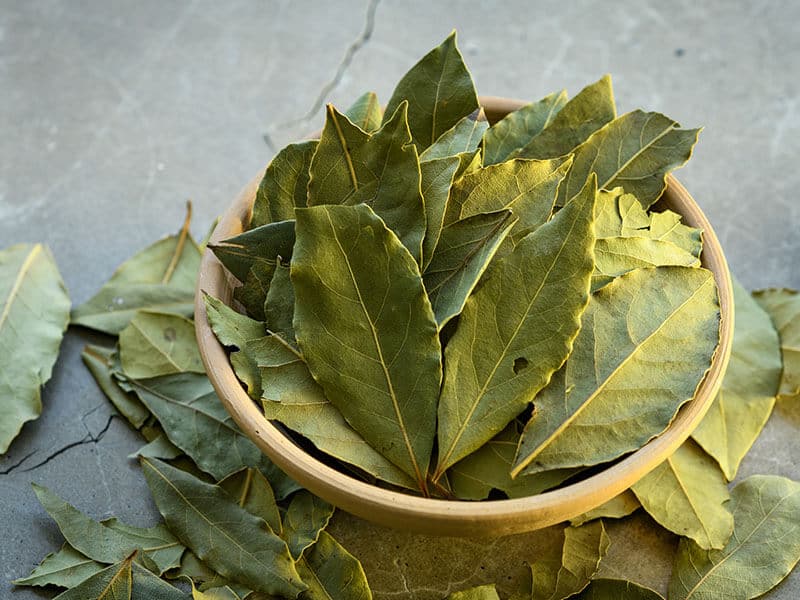
If you’re all set, scroll down to find the answer to your big question!
What’s The Point Of Bay Leaves In Cooking?
Bay leaves can either make or destroy a recipe depending on how you use it. Stick around for the most impressive facts on this spice’s nutritional facts, flavor profiles, and culinary uses.
What Are Bay Leaves?

Essentially, bay leaves are a type of aromatic leaves. They come from the sweet bay trees, an evergreen shrub that grows in the warm climate. These leaves are characterized by their elongated, thick shape with pointed ends.
As with other herbs, the fragrance of bay leaves is super noticeable. Herbal and slightly floral, their smell somewhat resembles that of oregano and thyme. Crush a few fresh bay leaves in your hands, give it a sniff, and you’ll probably be mesmerized.
The flavor profile of bay leaves remains debatable. According to most folks, the herb has a wonderful ability to bring the best out of warm spices and meaty flavors in a hearty course. Meanwhile, others claim it does nothing to the food.
However, it’s safe to say bay leaves are a common spice in any seasoned cook’s spice rack. In most cases, they have a pungent, sharp, and almost minty flavor.
Fresh vs. Dried Bay Leaves
In the culinary world, bay leaves are commonly used in three forms: fresh, dried, and powdered. Typically, you’ll find fresh bay leaves a little bit more expensive than dried versions.
As the leaves dry, their color tends to get muted, and their flavor intensifies. A jar of dried bay leaves can keep around for several years. In contrast, fresh ones only last for a couple of weeks in the fridge.
Flavor-wise, the fresh leaves deliver a robust menthol and pungent taste with a distinctive floral undertone that dried ones lack.
On the other hand, dried bay leaves offer a warm, subtle aroma. Their taste is often more bitter than their fresh counterparts. Therefore, dried leaves pair exceptionally well with warm spices such as chili flakes and nutmeg in cooking.
When the herb is added into liquid food such as broth, sauce, and water, it releases an almost minty flavor that’s somewhere between menthol and spearmint.
Let it sit for a while, and you can also taste delicate hints of Christmas tree pine and black pepper that contribute to the wonderful harmony of flavors. With a subtle bitterness, bay leaves are the key to keeping your soups and stews from being heavy to the taste.
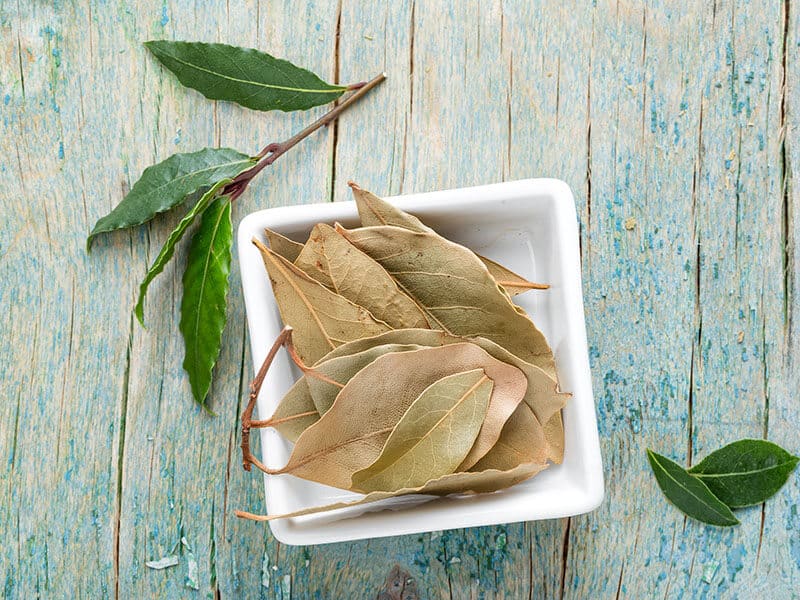
The Common Uses Of Bay Leaves
No doubt, bay leaves are a standard in plenty of savory dishes. More often than not, people toss this herb into slow-cooked recipes such as stew, soups, and braises. By its nature, the leaves play second fiddle to more prominent elements.
Quicker-cooking recipes, including pasta sauces or risotto, can also be enhanced with bay leaves. To use, just grab a few leaves or put a dash of powdered bay leaf into your pot and let the magic happen.
Due to their pointed shape, fresh bay leaves and whole dried leaves are considered a choking hazard if you swallow them. Hence, they should be removed before serving.
When in doubt, opt for ground bay leaves so that you don’t have to deal with tough, rigid pieces of bay leaves getting stuck in your teeth.
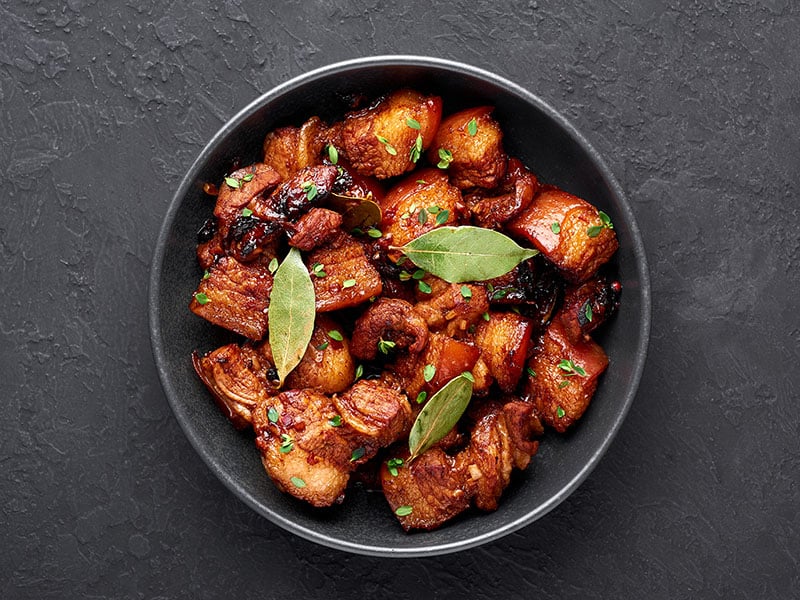
17 Bay Leaf Substitutes Conversion Ratio In Recipes
When in need, replacing bay leaf with another ingredient doesn’t have to be a hassle! This conversion chart has everything you need to carry out that delicious recipe on point.
| Substitutes | Proportion |
| Different Forms Of Bay Leaves | 1 fresh bay leaf = 2 dried bay leaves 1 fresh bay leaf = ½ tsp of ground bay leaf 1 dried bay leaf = ¼ tsp of ground bay leaf |
| Oregano | ¼ tsp of dried bay leaf = ¼ tsp of dried oregano 1 bay leaf = ¼ tsp of dried oregano. |
| Thyme | 1 bay leaf = ¼ tsp of dried thyme 1 tsp of crushed bay leaf = 1 tsp of dried thyme |
| Basil | 1 bay leaf = 1 basil leaf 1 tsp of dried bay leaf = 1 tsp of dried, ground basil |
| Juniper Berries | 1 bay leaf = 2-3 juniper berries |
| Curry Leaves | 1 bay leaf = ½ cup of curry leaves |
| Boldo Leaves | ½ tsp of bay leaf = ¼ tsp of ground boldo leaf |
| Rosemary | 1 tsp of bay leaf = 1 tsp of rosemary |
| Cilantro | Adjust to taste |
| Mexican Oregano | 1 bay leaf = ¼ tsp of Mexican oregano |
| Sage | 2 tsp of bay leaf = 1 tsp of sage |
| Kaffir Lime Leaves | Adjust to taste |
| Lime Zest | Adjust to taste |
| Red Bay Leaves | 1 bay leaf = 1 red bay leaf |
| Allspice Leaves | 1 tsp of bay leaf = 1 tsp of allspice leaves |
| Cinnamon Leaves | 1 tsp of bay leaf = 1 tsp of cinnamon leaves |
| Oregano And Thyme | 1 bay leaf = ⅛ tsp of oregano + ⅛ tsp of thyme |
What Can Be Substituted For Bay Leaf?
Are you out of both fresh and dried bay leaves while making a recipe? Of course, it’s best to run to the grocery store and grab some. However, you can save an instant trip to the store with these bay leaf alternatives in a pinch.
1. Different Forms Of Bay Leaves
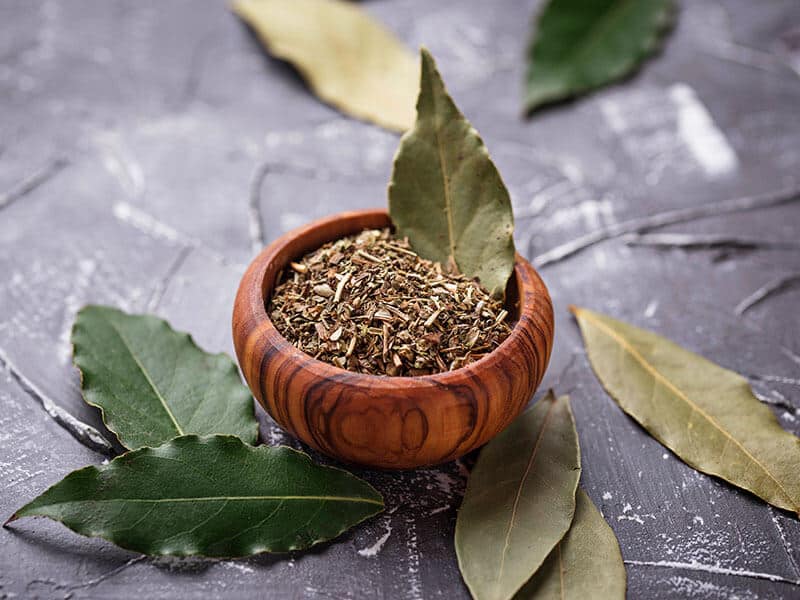
When your recipe calls for fresh bay leaves, but you only got the dried or ground version on hand and vice versa, don’t fret! You can absolutely use these three forms interchangeably in a pinch, as long as you know the correct conversion.
On an important note, you should be aware that bay leaves lose some of their aromas as they dry. So using a more significant number of dried leaves is essential to make up for that lost flavor and fragrance.
For proper substitution, here’s my recommended conversion ratio of each scenario:
- One fresh bay leaf equals two dried bay leaves
- One fresh bay leaf equals ½ teaspoon of ground bay leaf
- One dried bay leaf equals ¼ teaspoon of ground bay leaf
Whether fresh or dried, bay leaves are oftentimes used as whole rather than crushed. Also, as bay leaves tend to be bitter and stiff on their own, a tried-and-true tip is to remove them before the dish is served.
2. Oregano
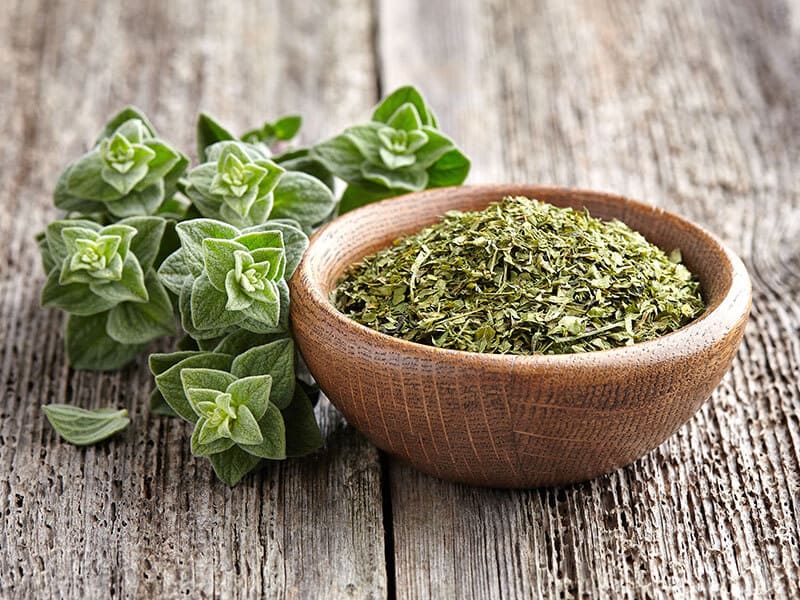
When infused into water, bay leaves deliver a delicately minty flavor, which explains why oregano makes an excellent replacement for them. As another member of the mint family, oregano gives your recipes a bold flavor even with just a few sprigs.
Earthy, grassy, and often with a slight bitterness, oregano is commonly combined with olive oil to create that Italian essence. Plus, its sweet and robust aroma comes close to that of bay leaves.
When it comes to your health, oregano is a nutritious herb that boasts some potent benefits. From strengthening your immune system to improving digestion, a dash of oregano on a daily basis can do you lots of good.
You can reach for dried oregano when that bottle of bay leaf is all out. Significantly, the tasty herb can round out tomato sauces, meat, chicken, and so many other Italian classics of your choice.
Since oregano’s bitterness can overwhelm other flavors on the dish, a little goes a long way. If the recipe calls for ¼ teaspoon of dried bay leaf, it’s best to use an ¼ teaspoon of dried oregano instead.
Or else, bay leaf can be replaced with ¼ teaspoon of dried oregano. Start slowly and adjust the amount to your taste as you go.
Jot down a few tried-and-true tips on how to use oregano in cooking!
3. Thyme
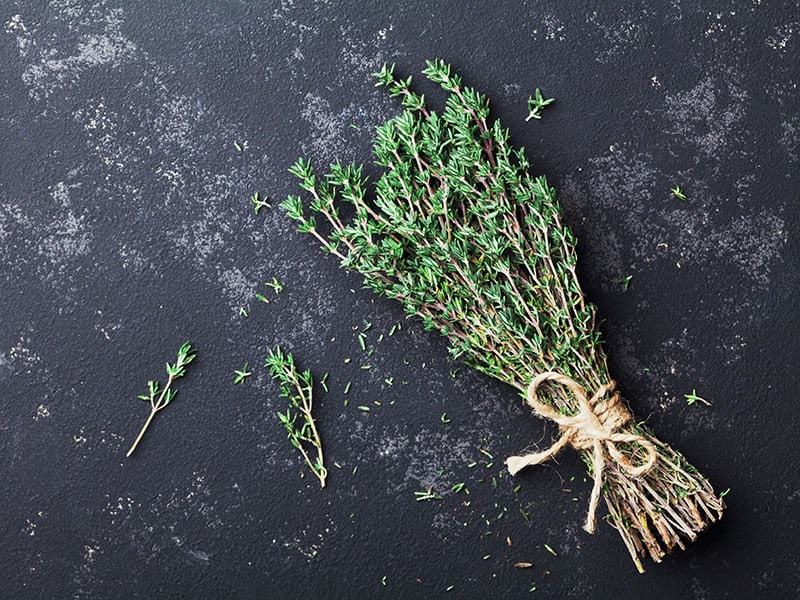
Another peppery, minty, and woodsy herb, thyme, is one of the best substitutions for bay leaves. While there’re over a hundred varieties, common thyme has a sharp and pronounced herbal flavor, which isn’t far from oregano in general.
To get the most of its flavor, the best way is to add thyme towards the end of cooking. At its best, thyme adds complexity and fragrance to soups, vegetables, pasta, and sauces without overwhelming the dish.
For visual appeal, getting a handful of thyme sprigs on the plate gives it an elegant look. The simple yet gentle flavor allows it to blend beautifully with almost anything, so you can rest assured it’ll be a good fit in place of bay leaves.
You can replace a single whole bay leaf with ¼ teaspoon of dried thyme. On the other hand, dried thyme can be substituted for crushed bay leaves at a 1:1 ratio.
On a side note, if there’s too much thyme going on in the dish, it’ll probably be ruined with an overbearingly pungent flavor. Hence, make sure to work with a small amount of thyme at a time.
4. Basil
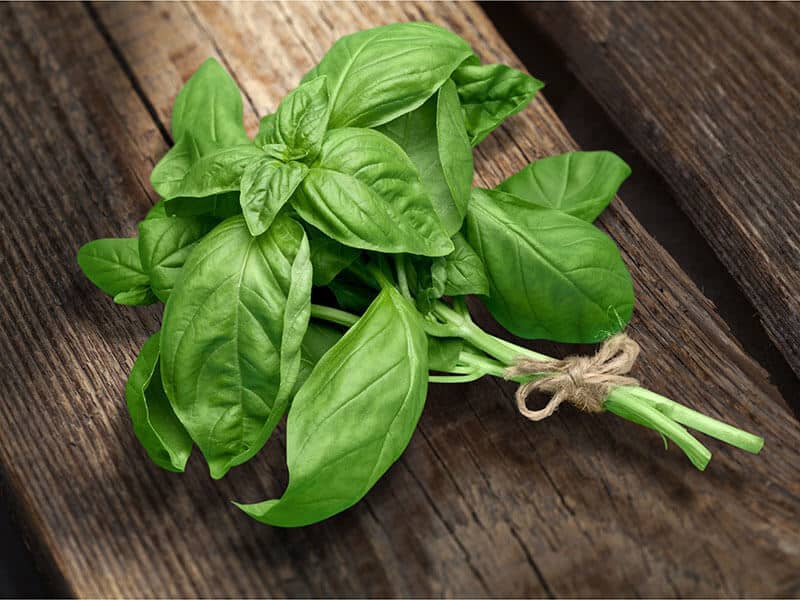
Beloved by home cooks and chefs alike, basil has become one of the most popular herbs in the world. It’s safe to say anyone has at least a jar of dried basil in their spice rack, which is why the herb can come in to save the day when bay leaves are not at their disposal.
Quite unlike others, basil is a herb of its own class. Fresh basil is pungent, robust, yet not totally bitter. It also has a mint-like quality that makes a good match for Italian specialties like pesto and tomato sauces, along with other mouth-watering recipes made from basil.
Despite the dissimilarities in appearance, basil works as a fantastic bay leaf alternative, especially when dried. This is because fresh basil has a strong licorice-like flavor. The herb will lose its potency as it dries, which tastes much more like bay leaves.
Though less likely to be available, if you have fresh basil on hand, one basil leaf equals one bay leaf in most recipes. Or else, feel free to swap dried bay for dried, ground basil at a 1:1 substitution ratio.
Whip up this simple chicken recipe with basil for tonight’s treat!
5. Juniper Berries
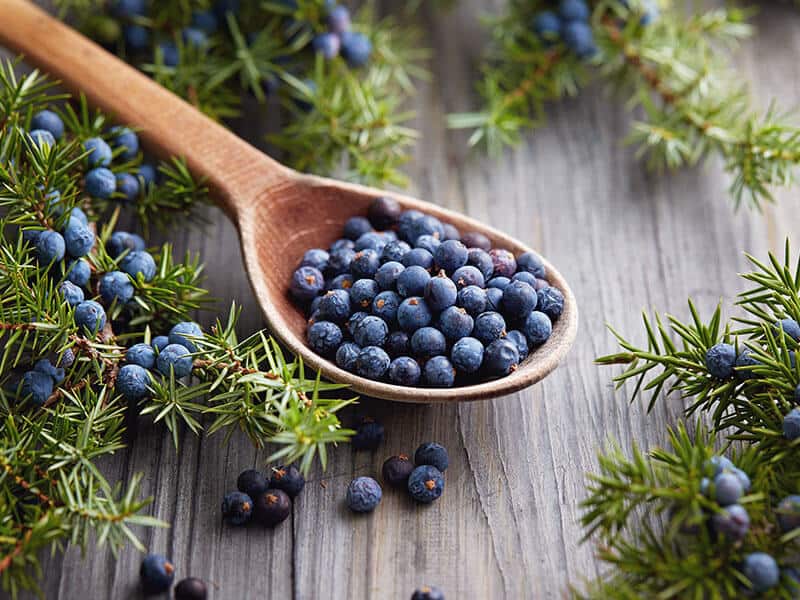
Yes, juniper berries are the most well-known flavoring in gin. But for folks who are unfamiliar with them in cooking, they’re actually female seed cones rather than actual berries.
At first glance, these dark violet orbs resemble berries a lot in both look and flavor, hence the name. If you’ve had gin before, you might have a general idea of what juniper berries taste like.
The best way to adequately describe the flavor of these berries is citrusy and very sweet. Plus, they carry a hint of bitterness and a slightly peppery taste. Its sweet and piney aroma is a reminiscence of cozy winter meals.
A close match to these berries, rosemary gives off a strong aroma and flavor that pairs well with meat-involving recipes. Thus, if you’re treating your family to a duck Sunday dinner, try combining these two spices, and you’ll be blown away by the result!
More often than not, Juniper berries are used as a robust essential flavoring for wine and other alcoholic drinks. Upon that, they’re also a popular spice for meat, stews, and other hearty courses.
Traditionally, many people apply these berries directly to the skin for wounds and pains in muscles, whereas others take them to treat upset stomachs. Overall, juniper berries carry a wealth of health benefits [1] when used in moderation.
You can toss in two or three juniper berries for every bay leaf. Grinding them before use will help release their intense flavor. When the dish is ready, remove the berries and serve.
However, keep in mind that juniper berries are not safe for pregnant and breastfeeding women. Using the spice in these cases might cause miscarriage or interfere with fertility. If you’re in this case, look for other options on the list.
6. Curry Leaves
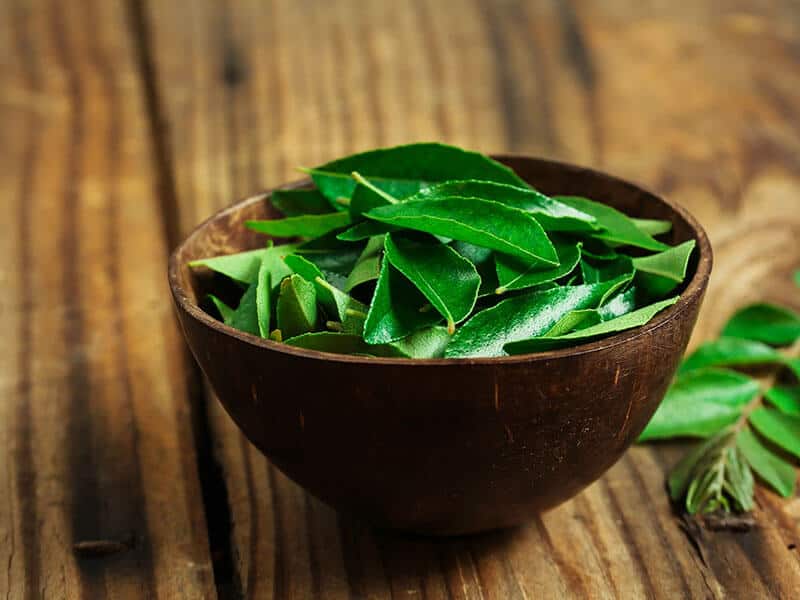
A mainstay in South Indian cuisine, curry leaves are, in a way, the West’s bay leaves. Typically less than one dollar per package, this herb makes a budget-friendly substitute for bay leaves.
If you bite directly into a curry leaf, which I don’t recommend, it will have a very sharp taste. When used in cooking, this herb delivers a slightly bitter and aromatic flavor that can be compared to citrus and asafoetida.
A host of delicious side dishes originating from Italy and main courses are tempered with curry leaves such as chutney, tadka, curd rice, and gojju, just to name a few. The spice also lends soups and stews an extra unique flavor.
Instead of running right to the store for a new bottle of dried bay leaf, you can use ½ cup of curry leaves to replace one bay leaf in a pinch. The subtle aroma and delightful visuals are sure to enhance your dish in the best way.
If you need more reasons to use curry leaves in cooking, hear it from the expert!
7. Boldo Leaves
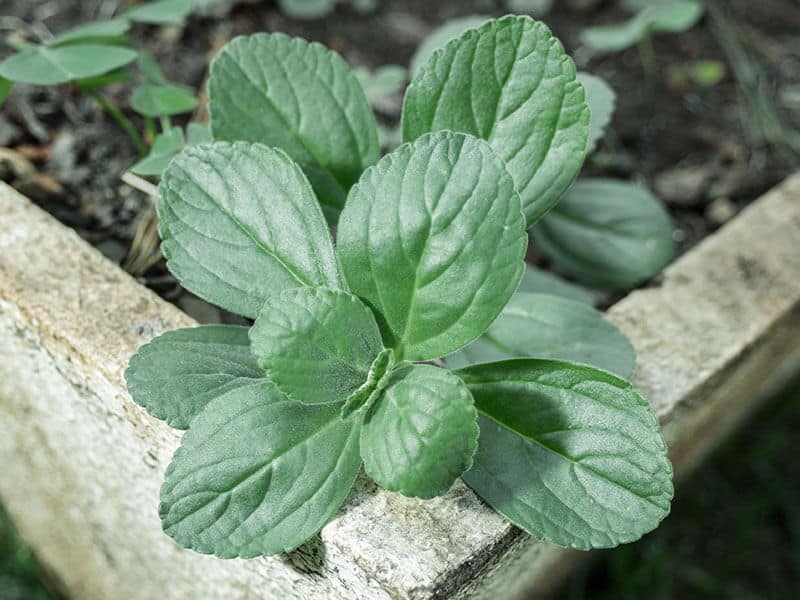
Chances are, many home cooks have yet to try boldo leaves in their home cooking. That’s mainly because this herb isn’t very commonly used outside of South Africa, where it thoroughly grows.
To the surprise of many, boldo is a member of the Monimiaceae family, making it a close relative of the bay. Therefore, their flavor profiles and fragrances share a lot in common.
Generally, boldo leaves give off a rich, savory, and robust taste that’s perfect when combined with more delectable elements.
For culinary purposes, the herb does a great job at different flavoring types of meat and accompanying lighter recipes, especially sauces, veggie-based dishes, and mushrooms.
It’s safe to say that boldo leaves have a rich history of use in folk medicine. Thanks to its antispasmodic properties, it’s able to calm bowel cramps, detoxify the liver, and improve your immune system in the long run.
Besides working as a culinary herb, you can try steeping these leaves in water to make some herbal tea. The recipe is super easy and often takes less than 30 minutes to come together.
Given boldo leaves’ strong taste, you’ll want to use half the amount of boldo leaves as you would bay leaves. For instance, every ¼ teaspoon of ground boldo leaf is enough to replace ½ teaspoon of bay leaf.
8. Rosemary
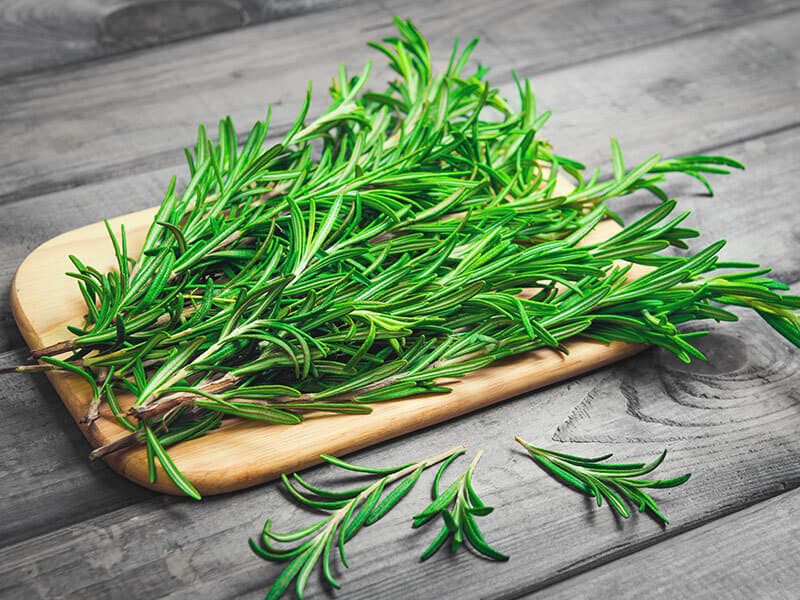
When it comes to handy herbs that most home cooks stock in their spice racks, rosemary is likely the most popular of all. Minty, woodsy, and piney with a bit of bitter aftertaste, rosemary’s flavor is truly one-of-a-kind in the world of seasonings.
Rather than a delicate herb, rosemary gives off a strong and powerful taste that’s instantly recognizable. A small pinch is enough to brighten your meal and lend it a wonderful lavender-like aroma.
Thanks to its warm and spicy nature, rosemary pairs well with a variety of ingredients like rich meat, sour dishes, and even desserts. For a final touch, don’t be shy to add a whole sprig of rosemary as the perfect garnish for your dish.
Essentially, the beauty of rosemary lies in the fact that it can be deployed in so many different ways. Pair it with lambs, mutton, steaks, roasts, pork, goats, and other gamey meat for a dinner that’ll turn heads.
Rosemary is one of your best bets to imitate the strong herbal smell that you’d get with bay leaves. The recommended ratio for replacing rosemary for bay leaves is 1:1. Although, since rosemary also delivers a peppery bite, feel free to adjust it to suit your liking.
9. Cilantro
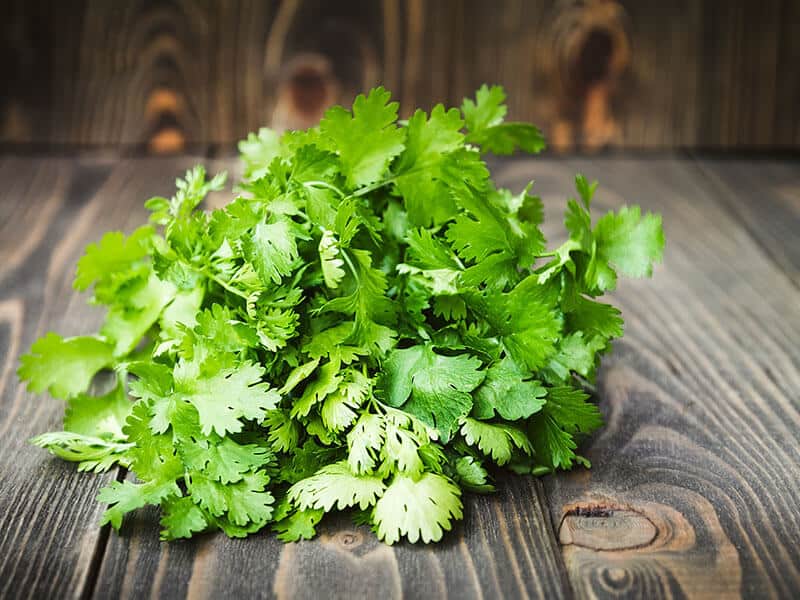
Cilantro is an essential element in Italian, Thai, and Mexican cuisines.
Many people tend to hold back from the idea of substituting cilantro for bay leaves. However, as a fellow fragrant herb, cilantro has what it takes to give your recipe a bright, grassy, and pungent flavor that you would typically get from bay leaves.
Cilantro refers to both the leaves and stalks of the coriander plants. Most commonly used as a spice, cilantro is a beloved component in Mexican, Indian, and Thai appetizers and main dishes.
Visually, this herb has lacy green leaves, which may remind you of flat-leaf parsley. In cooking, it brings out a delicate, complex, and somewhat citrusy flavor. It pairs well with nearly everything, from seafood to meat and vegetables.
In fact, not everyone enjoys the addition of cilantro. But for those who do, the herb delivers a sharp freshness to the recipes that you’ll fall in love with.
To substitute bay leaves, I recommend giving a light touch and taste as you go, so that its strong scent doesn’t quickly overpower the entire dish. Then, you can always add more to the taste.
Here’s everything you can do with cilantro and take your regular meals up a notch.
10. Mexican Oregano
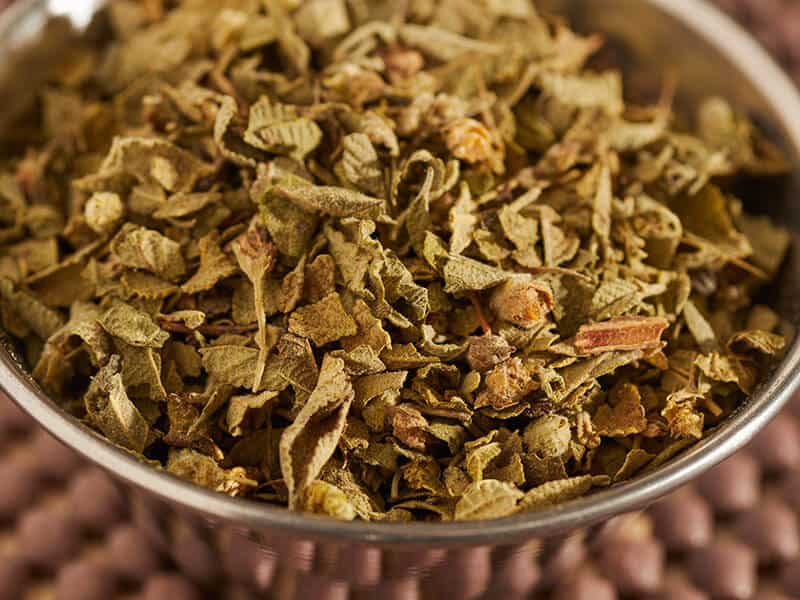
Despite having quite the same name as the famous Mediterranean oregano, Mexican oregano is very different from its counterpart. For starters, regular oregano is a part of the mint family, whereas the Mexican version is from the verbena family.
Flavor-wise, these two actually share the same undertone, but that’s it. Usually, Mexican oregano tends to be more grassy, pungent, peppery, and often with a licorice taste to it.
The difference becomes more distinguishable as you give them a smell test. In contrast to oregano’s slightly sweet and bitter notes, the Mexican version gives off brighter, more citrus hints overall.
No wonder Mexican oregano is an excellent replacement for bay leaves, especially in Mexican cooking. It packs a solid flavor to boost both traditional Mexican dishes, including salsa, enchilada, chili, and other Latin-style dishes.
More often than not, ¼ teaspoon of Mexican oregano equals one whole bay leaf. Start out slowly, and experiment with the seasoning until the desired flavor is achieved.
11. Sage
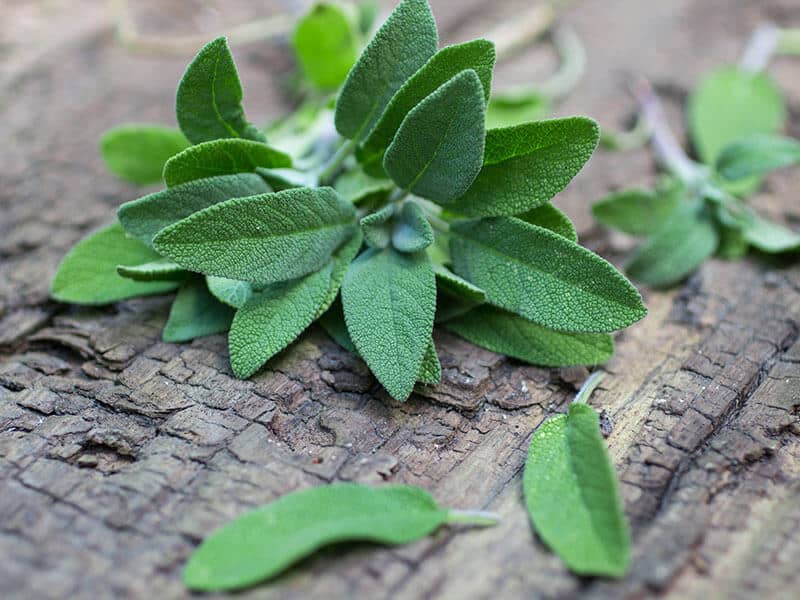
Often found in holiday dishes, sage lends itself to an earthiness and sweet-and-savory balance, making the perfect addition to heavy and robust recipes. As another part of the mint family, sage is a great stand-in for when you’re all out of bay leaves.
Like many herbs, fresh sage has a milder flavor than its dried counterpart. Therefore, the trick is to add dried sage at the end of cooking, thus preventing it from mellowing out the entire dish. On the other hand, fresh sage can hold up well to a long cooking time.
Whether it’s cutting through the meat’s richness, pairing with dairy dishes, or infusing sausages, sage is a great herb to use. Traditionally, it’s used as an effective treatment for diabetes. However, for pregnant women, it’s best to skip sage in your meals.
With sage, a little always goes a long way. In terms of quantity, use a 1:2 ratio of sage to bay leaves. Then, you can go as high as an equal amount if you’re familiar with the taste.
12. Kaffir Lime Leaves
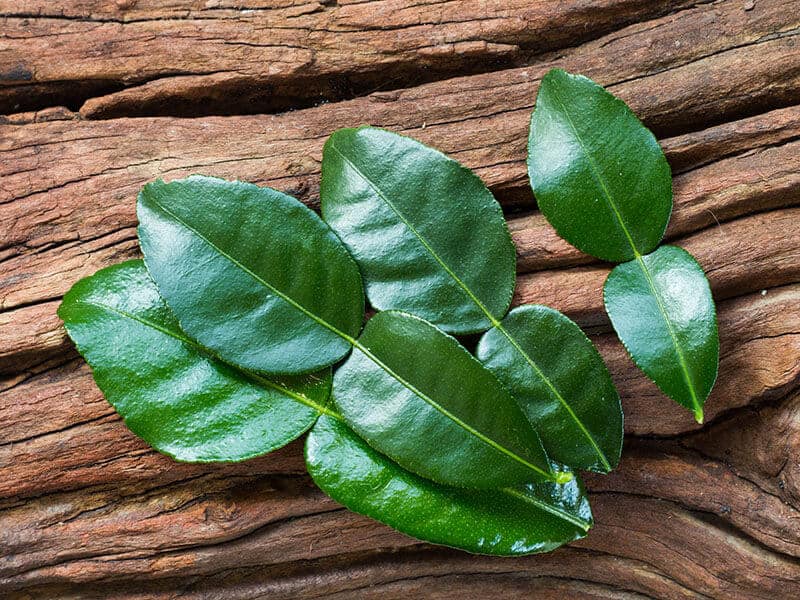
Native to tropical Southeast Asia, kaffir lime leaves are a vital component in Thai, Vietnamese, and Indonesian recipes. But beyond the use in Asian cooking, this aromatic herb can do wonders in a variety of bland soups and Mexican recipes.
Sweet, citrus, and floral, kaffir lime leaves lend a zesty, oh-so-light flavor to lift fish curries and coconut-based dishes. If it’s your first encountering this spice, its spiced-citrus taste and aroma are pretty unforgettable, like nothing else in your kitchen.
As far as its distinctive flavor goes, it might overpower milder herbs in your recipe. Thus, it’s best to use these leaves lightly when a recipe calls for them.
Fingers crossed, some Southeast Asian recipes won’t taste the same with these kaffir lime leaves. In fact, next time you run out of bay leaves in the middle of a soup, curry, or salad recipe, try these ones, and you’ll quickly realize why!
For cooking, adding the herb slowly towards the end of cooking allows it to retain more fragrance and flavor. Fresh, young leaves can also be grated sparingly over your dish for a pleasant presentation.
One of the reasons why nearly many Asian households have this herb in their homes is because of its herbal medicinal benefits. Rubbing it directly onto your gum helps get rid of harmful bacteria building up in your mouth.
If you’re unfamiliar with kaffir lime leaves, here’s a guide to using them correctly in cooking.
13. Lime Zest
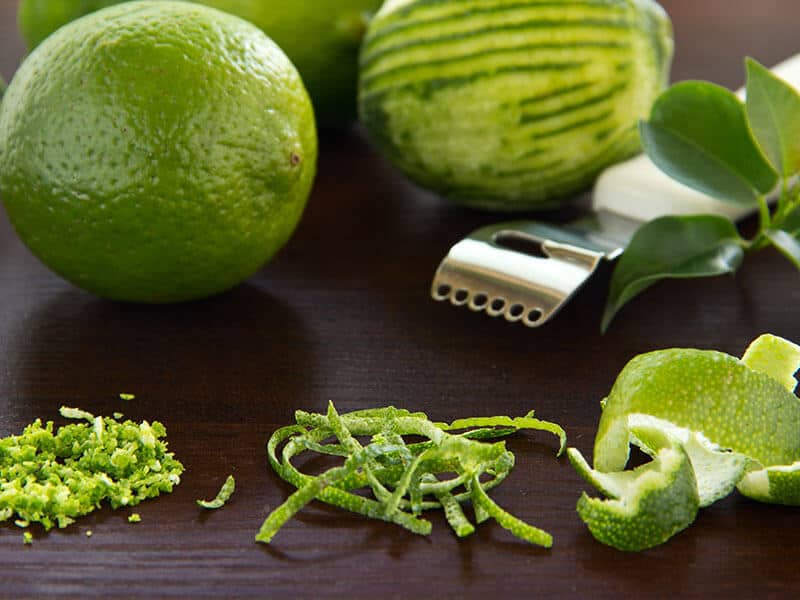
Making up for that strong, slightly bitter, and zesty flavor that you’re missing from bay leaves is actually a breeze. Just add lime zest. A sprinkling of lime zest makes all the difference, be it a rich meaty dish or a sweet, decadent dessert.
Simply put, lime zest is the dark green outer park of limes peel. This is where the tasty and aromatic citrus oil resides. You’ll want to avoid the white pith beneath its skin where the bitterness is.
The easiest way to get your hand on some zest is to use a box grater or a Microplane. If these two aren’t at your disposal, grab a vegetable peeler. It requires a bit more manual strength, but the trick always works in a pinch.
While not as popular as its lemon counterpart, lime zest is chock full of flavors. In cooking, the zest offers some tart notes and concentrated citrus tastes to the recipe.
Some folks love the little spark from lime zest that rounds out a long-simmering dish. For others, it makes the perfect contrast with the sweetness in the desserts.
When you’re scrambling for a bay leaf replacement, lime zest is a worthy option. Similar to bay leaves, its limey flavor can balance out a hearty course. Just grate some and then add it little by little to your dressings, soups, salads, and so on.
14. Red Bay Leaves
Though less common than its cousin, red bay leaves can be used for seasoning in dishes. If you happen to have some around, this unsung spice does a great job at mimicking the taste of bay leaves.
Red bay leaves come from another type of evergreen tree called a red clove. Despite the name, they come in a green color, similar to bay leaves.
These spicy leaves can be used to flavor soups, meats, and basically anything you would bay leaves with equal amounts. Take into account that when crushed, these leaves produce a mildly spicy fragrance that stands a chance of altering your dish’s profile.
15. Allspice Leaves
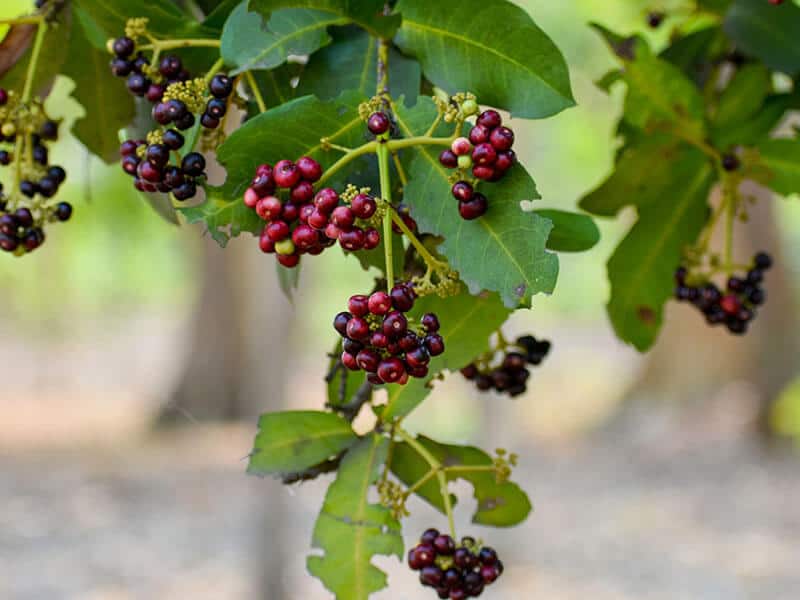
Don’t let its name misguide you! Allspice leaves are not a blend of other leaves. In fact, the origin of this name can be traced all the way back to the 17th century.
When allspice was first imported to Europe, its flavor was said to be a combination of nutmeg, cloves, and cinnamon. Meanwhile, its aroma much resembles all three, along with ginger, hence the name.
While allspice berries are great, their leaves have much more to offer. Both bay leaves and allspice leaves are warming and filling. However, allspice leaves give off less woody aroma and more spice.
Green allspice leaves have an intense freshness that turns more refined, spicier as they’re dried. Either fresh or dried, allspice is super fragrant. Along with bay leaves, this is one of the best things to add to your plain black tea.
Sounds good? There’re many ways to use this amazing spice in your recipes. It complements a variety of sweet and savory recipes such as meat dishes, stews, and baked goods.
You can use allspice leaves to substitute bay leaves in virtually any recipe at a 1:1 ratio. Though less likely available in your spice rack, this spice lends an exotic taste that you won’t forget anytime soon.
16. Cinnamon Leaves
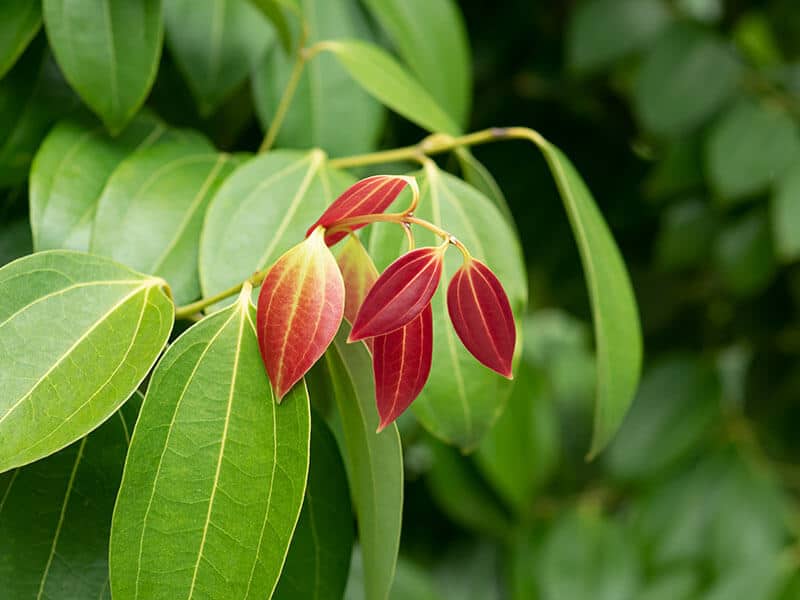
Cinnamon may be a pantry staple, but did you know that its close unsung brethren, cinnamon leaves, are just as useful? They’re found year-round and most commonly used in the dried state.
The widely famous cinnamon you find in your breakfast pastry, stick, and ground comes from the cinnamon tree’s bark. While a completely different part, its leaves can be used in most of the same way as the bark.
If you haven’t experienced this spice before, it resembles an extra-large bay leaf in the look. More often than not, cinnamon leaves are simmered in slow-cooked dishes and removed before serving as with their counterpart.
Spicy, pungent, and with a slight woody note, cinnamon leaves are used as flavoring agents for stews, curries, and desserts. On the aroma side, the spice delivers a musky fragrance with strong hints of citrus and cloves.
To replicate the flavor of bay leaves in a recipe, it’s best to use cinnamon leaves at an equal ratio. If you prefer a bit more spice, don’t be shy to toss in a clove of garlic or two to suit your desire.
17. Oregano And Thyme
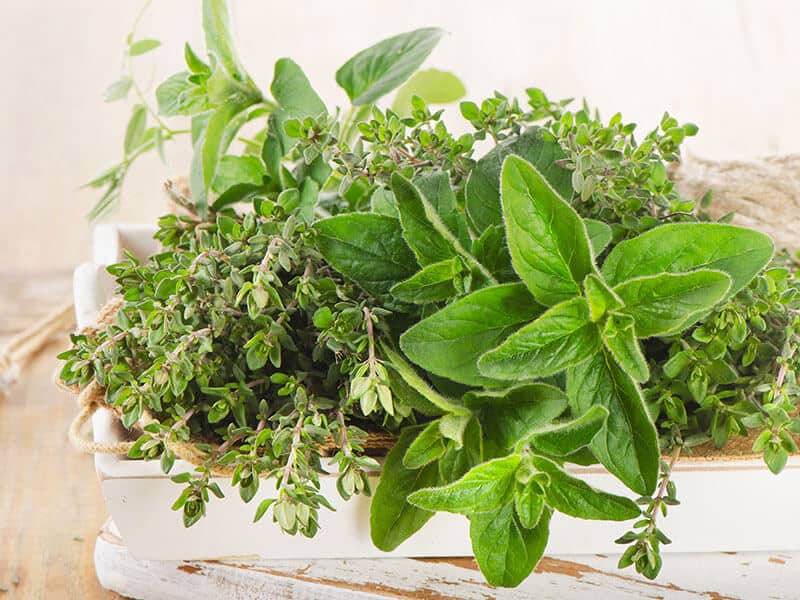
Why opt for oregano or thyme when you can have both for a brilliant combination of flavors? In fact, when combined in many recipes, these two spices give off the closest aroma to bay leaves.
Oregano offers a pungent and warm flavor with a lemon-like aroma. Meanwhile, thyme delivers a minty, earthy, and slightly lemony flavor. When combined, these two herbs create the perfect harmony to take your recipe’s flavors up a notch.
Whether fresh or dried, the blend of oregano and thyme is quite the secret to cooking restaurant-worthy meals at home. All it takes is a bit of experiment to find out what ratio suits your taste best.
The good thing about thyme and oregano is that they’re both pantry staples everywhere. Next time, jazz up your classic comfort food with this duo. You won’t be disappointed!
In most cases, you should blend equal parts of oregano and thyme in a bowl and use ¼ teaspoon of the mixture to substitute every whole bay leaf.
Bay Leaves’ Nutritional Values
For more details on bay leaves’ nutritional facts, you can find them in the following chart. As a rich source of vitamins, nutrients, and low levels of fat and carb, this herb is sure to boost your health when used in moderation.
| Nutrition (Serving size: 1.8g) | Value |
| Calories | 6 |
| Fat | 0.2g |
| Sodium | 0.4g |
| Carbohydrates | 1.4g |
| Fiber | 0.5g |
| Sugars | 0g |
| Protein | 0.1g |
| Iron | 0.8mg |
| Magnesium | 2.2mg |
| Vitamin A | 5.6mcg |
Impressive Bundle Of Health Benefits From Bay Leaves
Besides adding flavors to your hearty recipes, bay leaves are also a nutritious herb that offers some fantastic health benefits. Here are a couple of more reasons why you should incorporate them more into your regular diet.
1. Improves Digestion
Bay leaves contain certain organic compounds which are effective for treating an upset stomach, helping aid digestion, and even soothing irritable bowel syndrome.
What’s more, the herb is found to have an impact on the gastrointestinal system, thus decreasing the body’s toxicity and promoting the health of your kidneys.
2. Useful For Diabetes Management
Bay leaves are connected with regulated blood sugar levels and cholesterol levels. Hence, for patients dealing with type 2 diabetes, consuming bay leaves on a regular basis can help with the treatment.
3. Reduces Stress And Anxiety
Similar to oregano and thyme, the presence of linalool in bay leaves helps reduce the level of stress and anxiety in your body. So if you’re constantly stressed out, using this ingredient in your meals can help you to calm down and lower the risks of depression in the long haul.
4. Helps With Cancer Prevention
With phytonutrients, catechins, linalool, and parthenolide in their chemical structure, bay leaves have been shown to protect our bodies from the negative effects of free radicals. In other words, they’re a promising anticancer agent.
5. Aids Hair Care
Whether it’s for getting rid of dandruff, boosting hair growth, or making it shinier, bay leaves can do many wonders to your hair. And it’s super simple. Just steep some in water and rub them onto your scalp after shampooing or have a gentle rinse with bay leaf water.
6. Fights Against Respiratory Conditions
A poultice or essential oil extracted from bay leaves can be mixed into a salve then applied to your chest. Thanks to the natural antibacterial qualities, this does a great job in loosening your phlegm and getting rid of harmful bacteria trapped in the respiratory tract.
7. Protects Heart Health
Two of the essential compounds in bay leaves, caffeic acid and rutin, are both beneficial in enhancing heart health. These compounds strengthen the capillary walls in your heart and lower bad cholesterol levels.
8. Helps Control Inflammation
Bay leaves contain a unique phytonutrient called parthenolide. This compound has been proven to rapidly reduce inflammation when topically applied upon treated areas such as sore joints.
Tasty And Easy Recipes With A Gourmet Touch Of Bay Leaf
Fresh, dried, or ground, bay leaves will take care of that wonderful herbal, floral note you’re missing. Perk up your daily meals with these mouth-watering bay leaf recipes.
1. Slow Cooker Beef Stew
One of the most typical ways of using bay leaf, this slow cooker beef stew is something you’ll be craving after a long day. The hearty meal is loaded with pull-apart beef, tender vegetables, and a bay leaf or two.
After 7-8 hours of cooking, this beef stew smells fantastic and tastes even better. Bite by bite; it’s so rich, delicious, and juicy. Don’t forget to dip the excess broth with some bread and pair it with some excellent wine as your heart desires.
2. Lamb Tagine
A quintessential Moroccan meal, lamb tagine is perfect for special occasions. Sophisticated as it may sound, the dish is actually the Moroccan version of slow-simmered stew. Traditionally, it’s cooked in a large clay pot, but an oven also works great!
At its best, this much-loved recipe is a combination of warm spices, apricots, and tender lamb and best served with other scrumptious side dishes from Morocco. While cooking up, it’ll fill your kitchen with the most mesmerizing aroma ever. Sweet, tangy, and savory, how does it not taste like heaven?
Making mouth-watering lamb tagine at home is a breeze with this tutorial.
You can see this video to know more:
3. Curry Beef Stew
In the mood for intensely tasty yet easy beef curry? This beef curry comes to the rescue. Beef chuck simmered in a savory broth of global spices like masala, bay leaves, and veggies create the most palatable for the holidays.
There’s something about this curry that’s so warm and complex in flavor that it makes you feel like an indulgent hug. Plus, you can achieve excellent results with this recipe with either a Dutch oven or a stovetop.
4. Osso Buco
Osso buco literally means “bone with a hole” in Milanese, but the dish itself is way fancier than it sounds. In essence, it involves veal shanks braised in rich vegetables, bay leaves, and wine-based sauce.
On the second day, all the flavors meld together, making the dish taste even more impressive than before. If there’s a classic, easy, and fantastic Italian dinner recipe that you must try in your life, this should be it!
Frequently Asked Questions
Stick around to pick up some of the most common must-know facts when it comes to bay leaves. These pieces of information are sure to help you choose the right option for your recipe.
Nail That Bay Leaf Note With Something From Your Spice Cabinet!
Fingers crossed, bay leaves are a common herb that many home cooks and professional chefs alike use in cooking. From hearty soups and stews to quick-cooking recipes like rice and risotto, this herb sure owns a special place.
However, when you’re all out of it, don’t despair! Plenty of delicious and aromatic herbs can be substituted for bay leaves in cooking. Any of the ingredients above are sure to add extra depth to your dish without sacrificing its own integrity.
If you’ve got time to spare, experiment with various substitutions to figure out which one provides the most desirable flavor and consistency in your recipe.
Next time you find out your jar of bay leaf is empty, you’ll know what to look for. Leave a comment about your favorite bay leaf alternative in the comment box and share this joyous experiment with me!
References
- Rxlist.com.. [online] Available at: <https://www.rxlist.com/juniper/supplements.htm>
INDIAN CULTURE.. Bay Leaf: Herb of Victory and Peace. [online] Available at: <https://indianculture.gov.in/food-and-culture/spices-herbs/bay-leaf-herb-victory-and-peace>

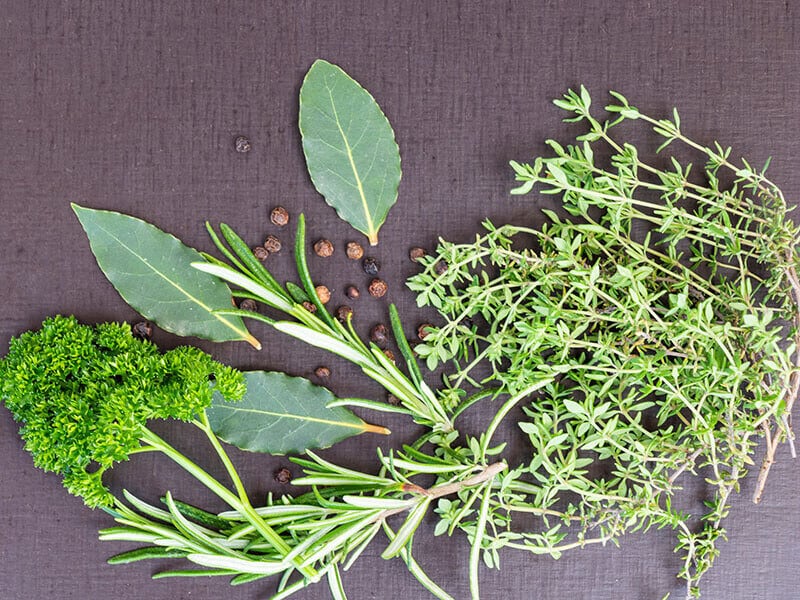


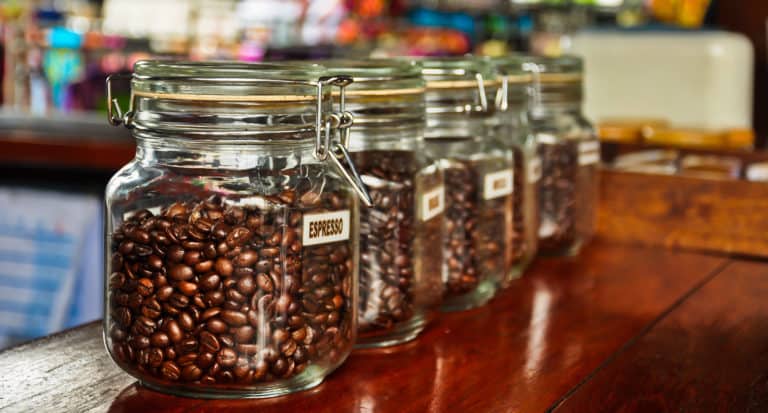
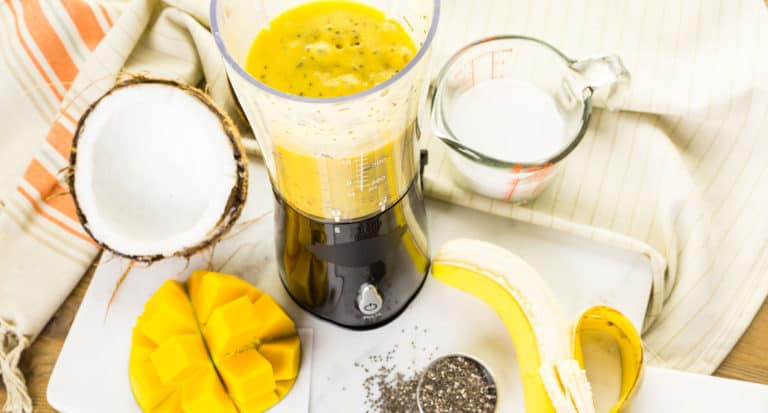
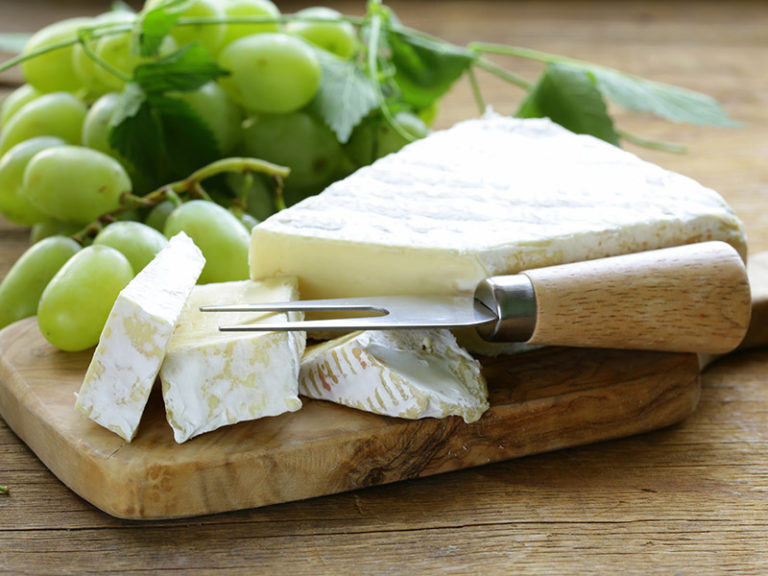

Amanda Collins
Founder and Senior Culinary Editor
Expertise
Culinary Arts and Management, Food Journalism and Critique, Recipe Development and Testing, Global Culinary Traditions, Sustainable Food Practices
Education
Institute of Culinary Education (ICE), New York, NY
Program: Diploma in Culinary Arts
Focus: Intensive hands-on training in culinary techniques, recipe development, and kitchen management, preparing students for professional roles in the culinary industry.
Monroe College, New Rochelle, NY
Program: Associate in Applied Science in Culinary Arts
Focus: Practical culinary skills, including cooking techniques, menu planning, and kitchen operations, with an emphasis on hands-on experience and industry standards.
Amanda Collins is a seasoned chef and food editor with a deep love for global flavors. Trained at the Institute of Culinary Education and Monroe College, and with over 15 years in the culinary field, Amanda has refined her skills in kitchens worldwide. Her background in food studies gives her a unique ability to share both recipes and the cultural stories that shape them.
As senior culinary editor at thebreslin.com, Amanda’s work brings authentic dishes to life, inviting readers to explore new flavors and techniques from around the globe. Her approachable style makes it easy for anyone to bring a bit of the world’s cuisine into their kitchen.